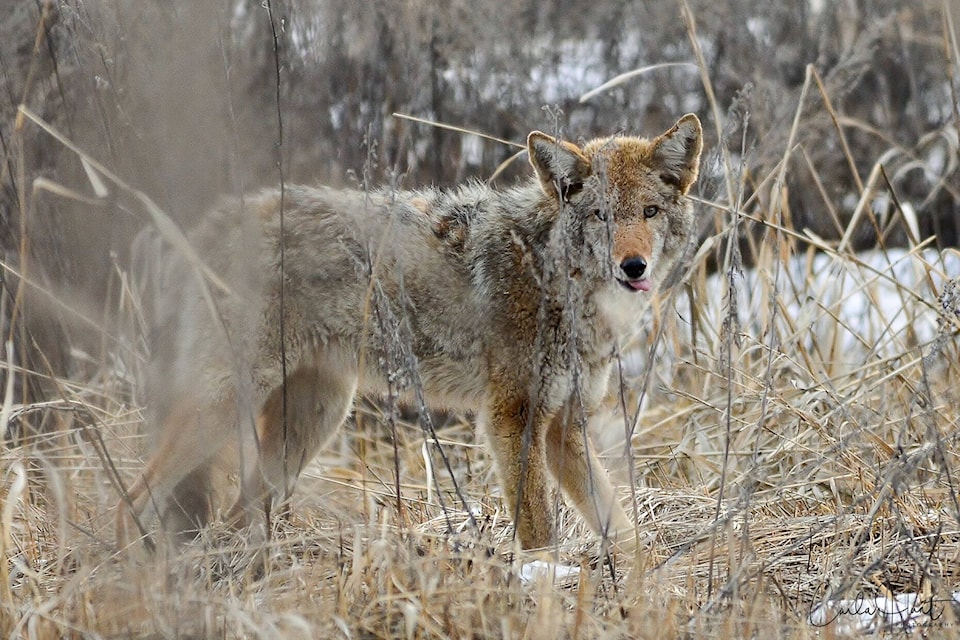Roseanne Van Ee
Okanagan’s Nature Nut
Coyotes have home range habitats, like our communities, which are large areas for hunting and roaming, usually between four and 40 square kilometres. This varies depending on gender, availability of food and season. The home range may overlap other coyotes. Their territories however are much smaller chunks of private property, which is marked with urine spots and scats to keep intruders out. Sometimes our pet dogs are attracted to these. Scats are dog-like, often seen on trails, but are elongated, compact, tapered at ends and usually full of hair.
Females usually dig dens in silty soil on a rocky ledge or shrubby slope above water. The entrance is about one half of a meter with a 2-4 meter tunnel leading to the den chamber. Multiple dens are common. Occasionally an uprooted tree, hollow log or culvert may suffice. Dens can be reused annually or a new one is made in the territory.
Coyote pairs often mate for life with both parents taking care of their young. They mate in January or February. About four to six pups are born in spring emerging from their underground dens with mom in early summer. Coyote pups are dark brown and look like domestic dog pups. Pups start off with mom’s milk then live off parents vomit (puppy baby food) until their permanent teeth grow in when moms start teaching them to hunt. Occasionally an older sibling assists with their care. At about six to eight months they start dispersing into their own territories and are fully grown at one year but don’t usually mate until almost two. Maximum age is often around eight years in the wild. Approximately 1,000 coyotes are hunted each year in B.C. for pelts and many perish as road kill.
Occasionally some domestic dogs can breed with coyotes creating a fertile hybrid mix. This hybrid mix, called a coydog, is often seen close to our communities as, unlike timid coyotes, they have far less fear of people. But, coydog pups don’t usually survive long, as domestic males don’t assist in the care of the young leaving “single moms” to fend for themselves and their young.
If we appreciate wildlife and would like to co-exist with coyotes living on the outskirts of town, we need to keep pet food indoors, our garbage secured and composts managed. Never feed coyotes or any wildlife. In areas with coyotes, keep a watchful eye on small pets and toddlers, and small livestock like chickens. People walking their dogs in wilderness or protected areas may encounter defensive, aggressive coyotes protecting their territories or dens with young. So walk your dog with a leash to prevent wildlife encounters.
For more on coyotes and other local wildlife read, Living With Wildlife in the Pacific Northwest by Russell Link. Our library should have it.
Roseanne Van Ee enthusiastically shares her knowledge of the outdoors to help readers experience and enjoy nature. Follow her on Facebook.



